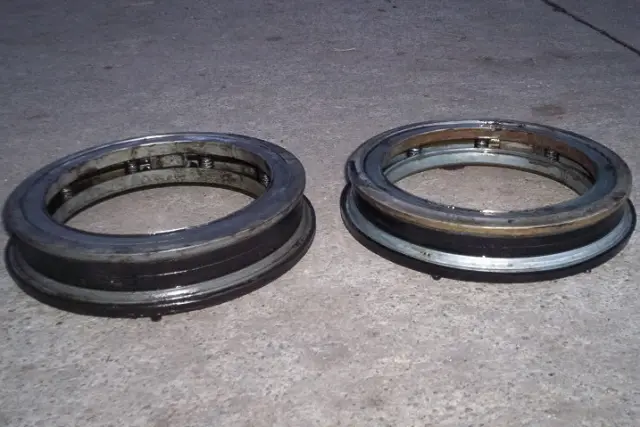Reply to D6Rick:
Thanks Old Magnet for the info and pictures. I didn't know about the taper face and gluing on the new seals that way. That will be fun! I found a number on the thinner seal: A-18705-1 The "0" was kinda hard to read and might be a "C" or a "6". I'm also wandering about the little seals or O-rings that go in the groove on the pins. I don't find a part number in my book so I was going to find some small O-rings and see if they fit and maybe use a little silicone on the pin too. I'm curious if anyone else has done that. Thanks.
Hi Rick,
the little seals on the pins I am sure are just to hold the bellows in place during assembly of the F/Drive and sprocket etc.
From memory they are made from flat rubber sheet and could be punched out using wad punches, they do not seal any thing, just hold, if I recall correctly the rings are only on 3 of the 6 pins.
The numbers you cited in your last post would just be die numbers from the maker.
My D8 Serv. Man. tells me that the later seals have 6 pins, older ones had 3, and to drill 3 extra holes to accomadate the extra pins. I seem to recall this as in cold weather with thick oil the 3 pins could shear off. I would suggest putting the 3 pin units in the outer hubs where they are easy to get at if problems occur later--don't have to pull sprocket. At the Dealer we normally used to put all new seal units behind the sprockets for this reason. Good Insurance.
When fitting the sprocket or outer bearing housing coat the cork seal faces with moly grease to prevent the facing adhering to the metal facing plate--if the cork is dry it can adhere to the face and tear, this also can occur when the tractors have not moved for some time.
As for the taper on the seal face just glue the cork seal on with the special Cat Contact Cement (5H2471) for the job, have done many this way without the tapered former, the taper is built into the face of the bellows. Carefully align the seal and press firmly into place with the fingers going round and around several times checking to ensure full glued contact.
When glued and dry rotate the new seal face on a large sheet of sand paper or such to get a full witness mark of the seal face around the outer edge of the facing to about 1/16" width minimum for the thinnest witness width.
Hope you can follow this ramble.
Cheers,
Eddie B.
